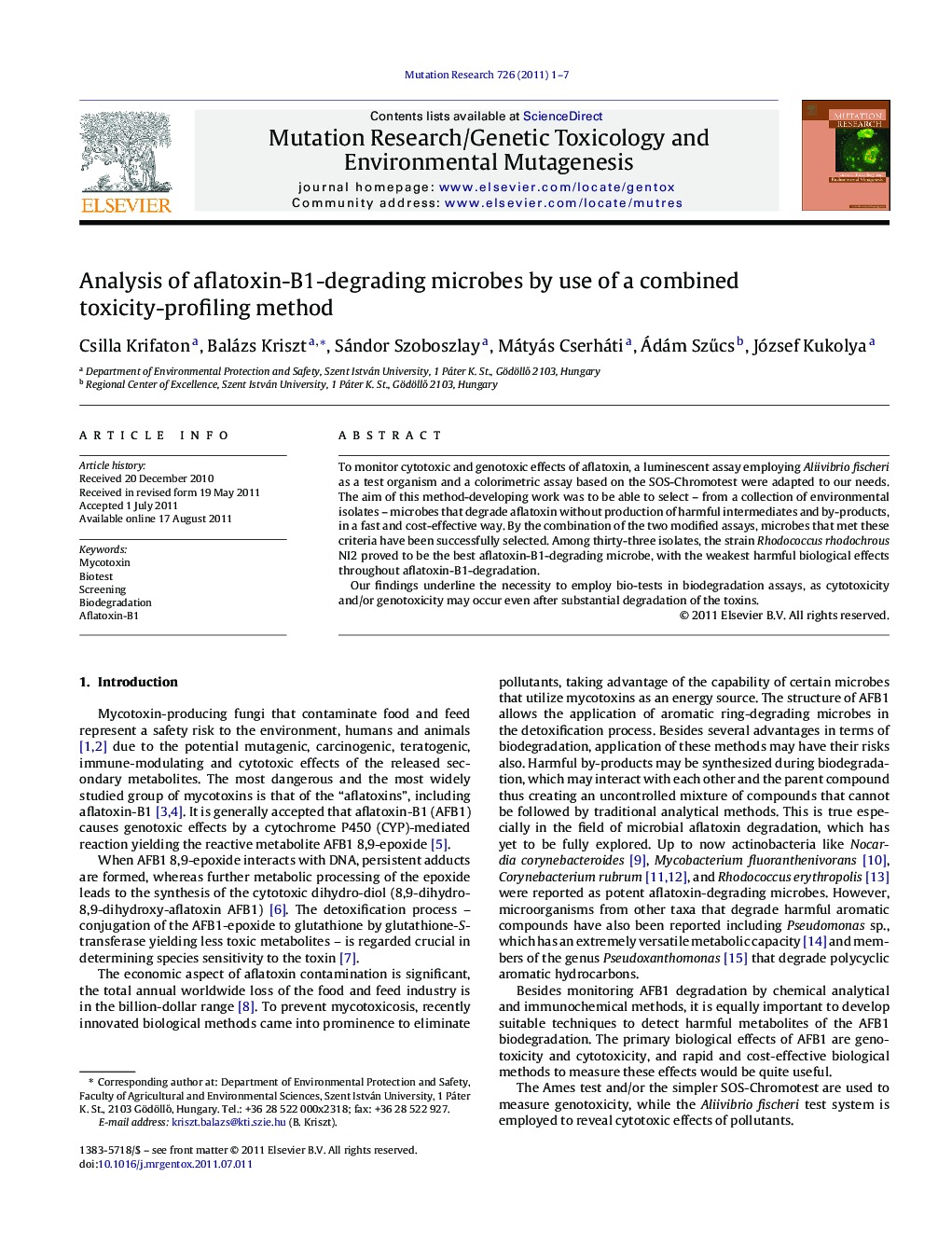| Article ID | Journal | Published Year | Pages | File Type |
|---|---|---|---|---|
| 2148270 | Mutation Research/Genetic Toxicology and Environmental Mutagenesis | 2011 | 7 Pages |
To monitor cytotoxic and genotoxic effects of aflatoxin, a luminescent assay employing Aliivibrio fischeri as a test organism and a colorimetric assay based on the SOS-Chromotest were adapted to our needs. The aim of this method-developing work was to be able to select – from a collection of environmental isolates – microbes that degrade aflatoxin without production of harmful intermediates and by-products, in a fast and cost-effective way. By the combination of the two modified assays, microbes that met these criteria have been successfully selected. Among thirty-three isolates, the strain Rhodococcus rhodochrous NI2 proved to be the best aflatoxin-B1-degrading microbe, with the weakest harmful biological effects throughout aflatoxin-B1-degradation.Our findings underline the necessity to employ bio-tests in biodegradation assays, as cytotoxicity and/or genotoxicity may occur even after substantial degradation of the toxins.
► We performed a method developing work to select microbes for aflatoxin degradation. ► Two modified bio-tests were combined for creating toxicology profiles. ► We pointed out that cyto-genotoxicity might occur even after substantial toxin degradation. ► The most appropriate microbe with the weakest harmful biological effects was selected. ► We highlighted the necessity to employ bio-tests in biodegradation assays.
